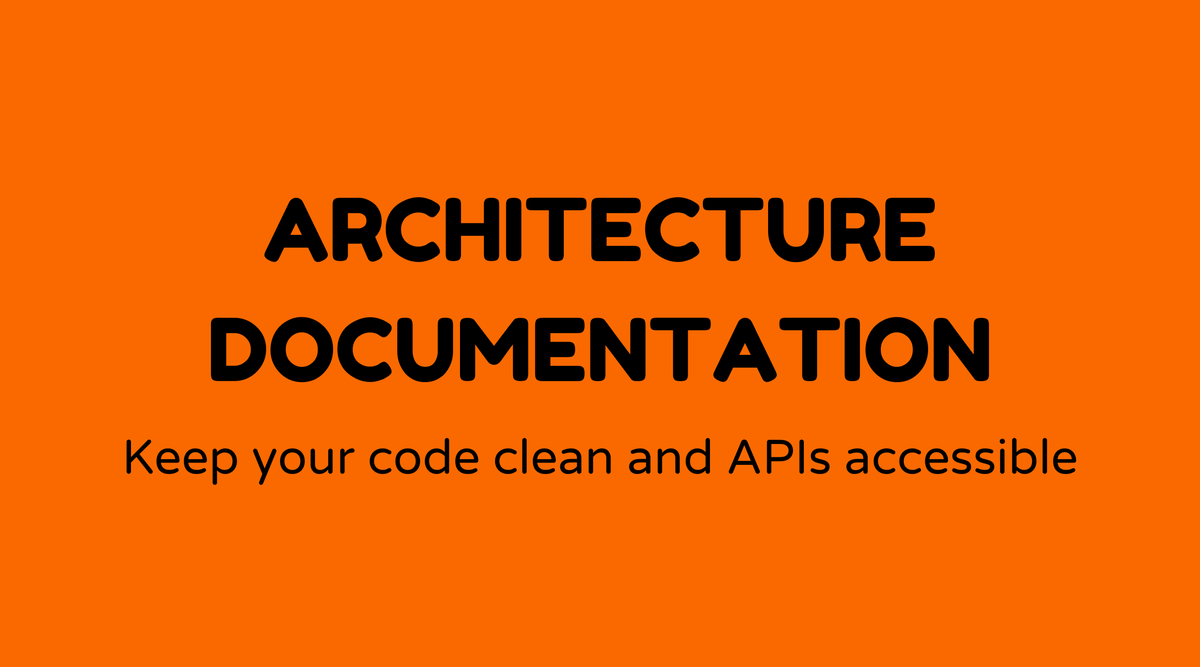Architecture documentation

Overview of Architecture Documentation:
Architecture documentation functions as a vital guide for development teams and stakeholders, aiding in the comprehension and definition of the system's structure and design. It serves as a roadmap that directs the development and maintenance of systems, illustrating how components interact within the framework. In software development, architecture documentation is essential for ensuring alignment with project objectives and delivering a clear vision for future adjustments.
This documentation encompasses diagrams, use cases, code snippets, and comprehensive descriptions that outline the system architecture. By presenting insights into the top-level design, it enhances communication across teams and ensures that all members are aligned. It is a foundational resource for effective collaboration, minimizing redesign efforts and mitigating technical debt.
Why Architecture Documentation Matters:
Having architecture documentation is akin to having a roadmap in software development. It supports decision-making, identifies potential issues early, and advocates for best practices. Here are key reasons for its importance:
- Clarity and Understanding: Ensures all team members have a shared understanding of the project's architecture.
- Consistency: Provides a uniform method for building applications, ensuring that components integrate seamlessly.
- Future Maintenance: Aids future developers in grasping the system quickly, cutting down the time required for onboarding and maintenance.
- Stakeholder Communication: Delivers stakeholders a clear overview of the system, enhancing communication and setting expectations.
- Risk Management: Highlights architectural risks and challenges early in the development cycle.
Moreover, it is a dynamic document that adapts with the project, making it fundamental to enduring success in software development.
What is Architecture Documentation:
Architecture documentation is a collection of documents that record the architectural decisions and design of a system. It includes several components:
- Structural Diagrams: Visual layouts of system components and their relationships.
- Use Case Scenarios: Narratives of how users will engage with the system to accomplish specific objectives.
- Design Patterns: Reusable solutions for common software design challenges.
- Technical Requirements: Hardware and software prerequisites, along with constraints.
- Component Descriptions: Information regarding each component's role and responsibilities.
These components together clarify not just what and how a system is built, but also why it is constructed in such a way. This level of understanding is essential for adapting and evolving systems over time.
How to Create Architecture Documentation:
Developing architecture documentation is both an art and a methodical process. Here’s a structured approach:
- Identify Stakeholders: Determine who requires the documentation and for what purpose.
- Collect Requirements: Gather business, technical, and user needs to outline what the documentation should address.
- Define System Boundaries: Outline the system’s limits and pinpoint interactions with external systems.
- Create Visual Diagrams: Develop architectural diagrams such as flowcharts, sequence diagrams, and component diagrams.
- Detail Component Architecture: Offer a comprehensive description of each component, including interfaces and interactions.
- Review and Revise: Collaborate with team members to assess the documentation and keep it current with project changes.
Using documentation tools like Confluence or Lucidchart is also advantageous for structuring and visualizing your documentation.
Examples of Architecture Documentation:
Several notable projects demonstrate effective architecture documentation:
- Spotify's Backend: Recognized for its modular architecture, Spotify's documentation provides detailed insights into microservices, data flow, and user interactions.
- NASA's Software Architecture: Features comprehensive documentation to ensure their systems comply with stringent reliability and safety standards.
Projects like these illustrate how thorough documentation can streamline processes and encourage creativity.
FAQs
What should be included in architecture documentation?
It should encompass diagrams, design patterns, use case scenarios, and detailed descriptions of components and system interactions.
How often should architecture documentation be updated?
It should be revised regularly, ideally whenever there are notable changes or updates to the system architecture or components.
What tools are useful for creating architecture documentation?
Tools like Draw.io, Lucidchart, and Microsoft Visio are excellent for diagrams, while Confluence and Markdown work well for text-based documentation.
Why is visual documentation important in architecture documentation?
Visual documentation simplifies complex structures, making it easier for stakeholders to grasp the overall system design and component interactions.
How detailed should architecture documentation be?
It should be as detailed as necessary for understanding the system’s architecture while avoiding unnecessary complexity that could hinder readability.
What are the common challenges in maintaining architecture documentation?
The primary challenges include keeping documentation current with fast-paced development cycles and ensuring it remains relevant across teams and evolving project requirements.



